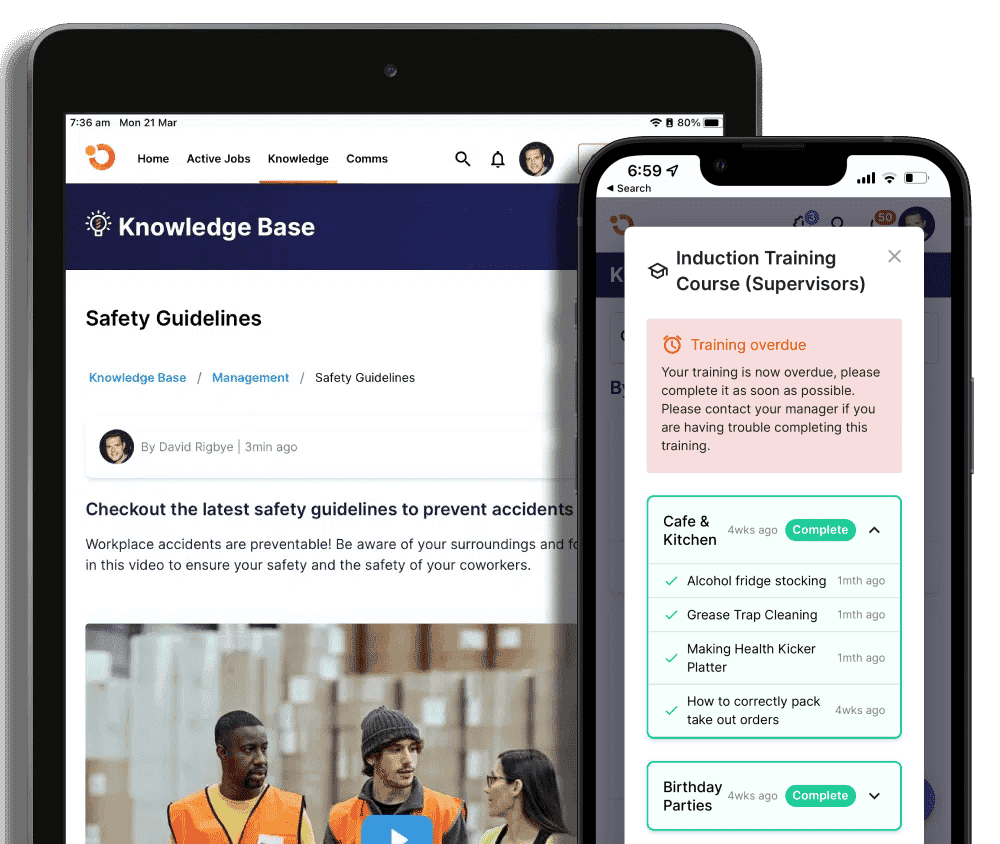Training Needs Assessments: Your Ultimate Guide (with Free Templates!)
From addressing changes to government policy to upskilling employees to supporting the
introduction of new technologies, there are plenty of reasons why you conduct training.
But without a training needs assessment, you risk wasting your budget on ineffective methods.
Utilising TNAs before launching training helps you lay a solid foundation, allowing you to build an expertly skilled workforce based on measurable outcomes and better ROIs.
Why Should You Do a Training Needs Analysis?
Training needs assessment is a must-do task for business owners who want to use their training budget most effectively — and who doesn’t want that, right?
But the importance of TNA goes beyond that, as you’ll see from the five reasons below:
#1 TNAs Determine Employee Skill Gaps
Evaluating employee skill gaps allows you to identify trends within your workforce. Ultimately, you can determine where training is most needed to reach your business goals, ensuring you never waste money on less-than-effective programs.
#2 TNAs Identify New Training Options
Despite what you may think, there are training methods you are yet to consider — and training needs analysis can reveal them.
For example, you might conduct a survey that shows classroom-based lessons take up too much employee time, causing them to fall behind on their duties. Once you know this, you can craft different training programs that cater to individual learning styles and promote improved engagement.
#3 TNAs Offer Better Return on Training Investment
Go on — ask a CFO about the importance of a TNA. They’ll give you one answer: ROI. Why? Because they understand that training developed on measurable skill gaps stands a better chance of improving performance.
Training needs assessments give you a foolproof method of measuring the effectiveness of past programs, ensuring you:
- build credibility among stakeholders.
- earn senior respect.
- justify the training budget requirement.
#4 TNAs Provide Easier Organisational Change
You can apply the “the only guarantee in life is change” adage to business. After all, your company will likely introduce a new software or management platform (*ahem* Operandio), restructure a department, or even change its vision at some point.
In other words, you can’t avoid change. Therefore, you need to give your employees a transition toolkit.
But how do you do this, we hear you ask? Well, it’s all about training. Using training needs analysis, you can determine which programs will better equip employees during change by assessing their individual needs.
#5 TNAs Connect The Right Employees To The Right Training Programs
A significant output from the TNA is a list of who requires which training options.
By discovering this, you can tailor courses to fill measurable skill gaps and adapt to various learning styles for near-perfect training effectiveness.
What Are The Three Levels of Training Needs Assessments?
You have the importance of TNAs well and truly sorted. So, let’s move on to the three levels of training needs analysis:
#1 Organisational
As an organization, you probably invest in employee training every year. But is each program really aligned with your business goals?
Training needs assessments at this level allow you to pick training programs that work well with your overall objectives. It defines the workforce’s current skill levels and gaps, helping you create training programs accordingly.
Consider it macro-level analysis answering these questions:
- Which departments or areas demand employee training?
- Why is the training program recommended?
- What are the measurable learning outcomes?
#2 Operational
At this stage, a TNA determines the type of training required to achieve your desired level of job performance and competency. Here, you’ll determine the skills and knowledge needed and relate them to the current gaps and competencies.
The goal is to answer questions like:
- What are the job performance standards?
- What skills are needed to complete the job properly?
- What are your employees’ current skill levels?
#3 Individual
The final stage involves conducting a micro-analysis on specific employees to analyse how they’re performing.
It provides an overview of current performance and whether it meets the standards by answering basic questions, such as:
- What’s the expected job performance from the employee?
- Do they have the skills to meet expectations?
- What is the gap between actual and expected performance?
- What training programs do they need to fill skill deficiencies?
How to Conduct a Training Needs Analysis (with Templates!)
Conducting a training needs assessment is much easier than you might think, especially when using our free templates and simple key steps below:
#1 Craft Clear Business Objectives
Right off the bat, you need to know what you want out of your training programs. Is your company looking to enhance innovation? Perhaps you want ultimate efficiency? Or maybe you’re trying to reduce costs?
Whatever it may be, write down your end goals and then decide which parts of your business need to be addressed to make it happen.
#2 Identify Skills Needed to Achieve Them
Next, you must identify how your employees will improve on the areas outlined in the first stage. We recommend using a one-to-five range for describing the current/desired skill/competency level, with five being highly competent.
#3 Eradicate Learning and Performance Roadblocks
Using surveys and similar techniques, decide whether there are any obstacles that prevent staff from closing their skill gaps. Whether it’s poor training delivery or lack of support from management, you need to remove these roadblocks to support your business goals.
#4 Offer Appropriate Training Programs
Armed with all the information you could possibly wish for, create sufficient training programs suited to a range of individual learning needs to let your business thrive.
Simplify Your Training Needs Assessment Process with Operandio Today!

Performing a training needs assessment alone is all well and good, but we can’t deny that it’s time-consuming. So, why not streamline operations with a handy digital checklist and training platform?
With a free Operandio demo, you can try before you buy, allowing you to experience the ease of dynamic checklists, live performance insights, real-time reporting, and more for yourself.


